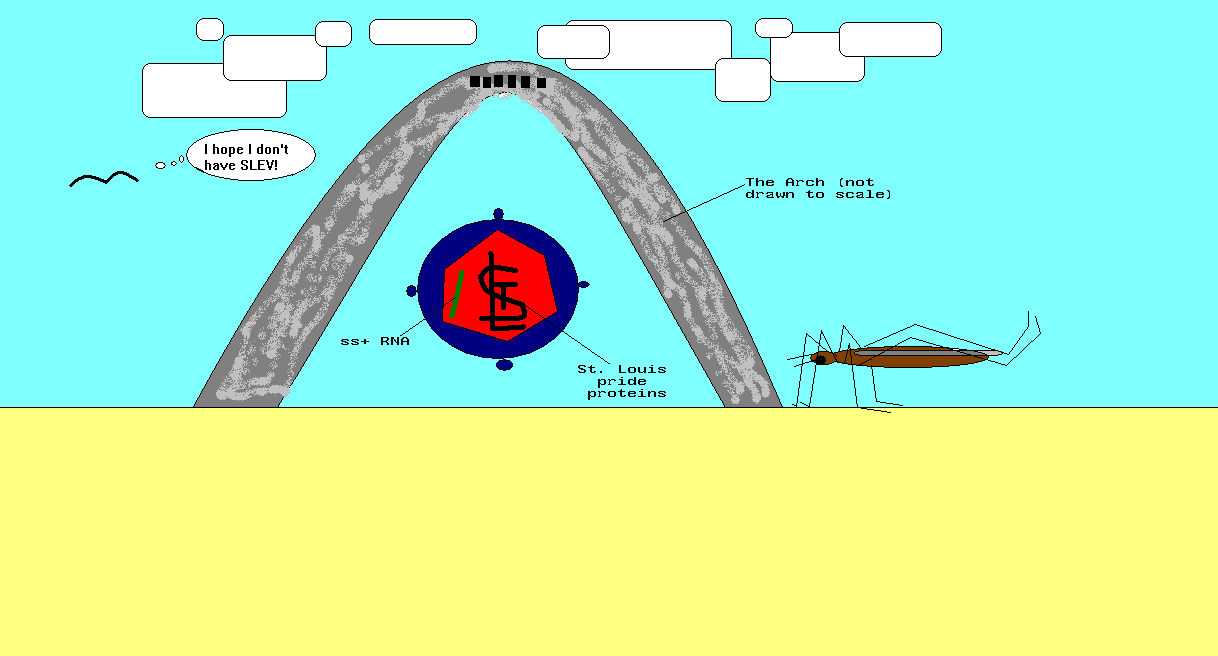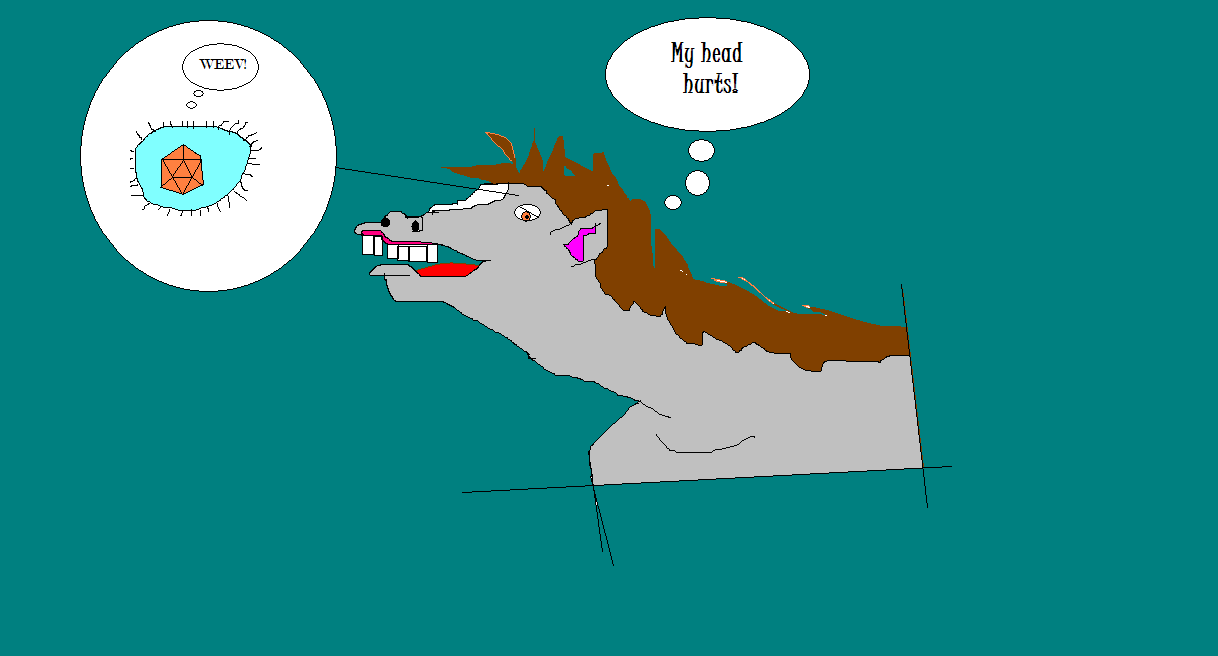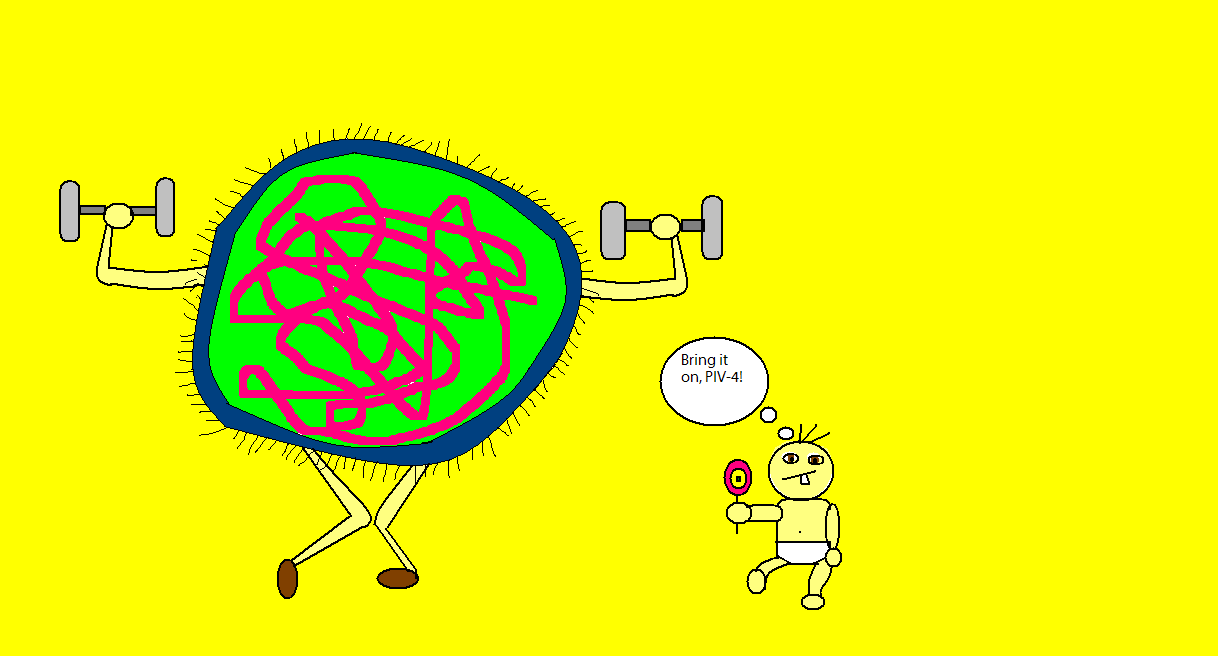
Name: St.
Louis Encephalitis Virus (SLEV) [A.K.A. The ARBO from MO (read “the
arBO from ehmO;” it sounds better that way, trust me.)]
Description: A
member of the flaviviridae family, genus flavivirus, SLEV’s genome
is comprised of nonsegmented, single-stranded, positive polarity linear
RNA. Therefore, its genome alone is infectious. SLEV as a lipid-containing
envelope and its capsid is icosahedral. It contains surface projection
proteins (7 nm in diameter) which are antigenic and which exhibit hemagglutinin
activity. Transcription occurs in the cytoplasm and is initiated via removal
of a 5’cap. The 3’ end of SLEV’s mRNA is not polyadenylated.
Its genome contains one open reading frame (ORF) and encodes 3 sturctural
proteins (M, E, and C) and 7 non-structural proteins (polymerase and helicase).
Mature viruses can be found hanging around the cytoplasm of nervous system,
brain tissue, or liver cells.
Power: THIS
VIRUS WILL MESS YOU UP! Infection with SLEV adversely affects the gastrointestinal
system, nervous system, dermis, mucosa, or epithelium. Patients usually
present with headache, photophobia, pyrexia, stiff neck, and/or uncoordination.
Additionally, patients may develop hepatitis, liver dysfunction, meningitis,
seizures, and (obviously) encephalitis. Lesions may occur in nerve, liver,
or brain tissue. Outbreaks tend to occur during the summer months in the
Midwestern, western, and southwestern U.S. SLEV is responsible for 10-40
cases of encephalitis annually in the U.S.
Offenses:
Attacks: SLEV
is an arthropod-borne (ARBO) virus. It is transmitted primarily
by four main species of mosquito: Culex pipiens, Culex tarsalis, Culex
quinquefasciatus, and Culex nigripalpus. Small wild birds (particularly
English sparrows) act as a reservoir for this virus. Luckily, SLEV is
not transmitted from person to person and infection is often subclinical.
Outcome: BLEAK.
Encephalitis caused by SLEV has a 10% fatality rate (higher in elderly
individuals). This virus means business.
Speed: Once
a human is infected with the virus, the incubation period lasts anywhere
from 4-21 days before symptoms occur. Fatal cases cause death within 7-14
days.
Defenses:
Vaccines: None
available.
Behavioral: Bedrest
is recommended. Preventable by avoiding contact with mosquito vectors
(very difficult in summer).
Treatment: No
antivirals available. Primarily supportive care: management of seizures
and other neurological symptoms.
Game action:
Miss 2 turns due to rest in bed. If you are over 60 years old, you may
want to forfeit.
One liner: “Is that
a mosquito on your SLEV?” “Oh shirt!”

